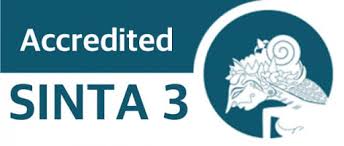Kemampuan Berpikir Analitis Masalah Bangun Ruang Ditinjau Dari Gaya Kognitif
DOI:
https://doi.org/10.54069/attadrib.v7i2.743Keywords:
Analytical Thinking, Cognitive, Verbalizer, VisualizerAbstract
The ability to think analytically is a student's skill when describing a problem so that several parts of the problem are formed and also determining relationships based on ongoing problems. Different cognitive styles in obtaining results both visually and verbally will form two groups, namely the visualizer cognitive style and the verbalizer cognitive style. Researchers use the visualizer and verbalizer cognitive styles in order to find out students' analytical thinking abilities when determining problems in an image or word. This research is a qualitative descriptive research. The topics used were 3 students who had a visualizer cognitive style and 3 students who had a verbalizer cognitive style for class V MI Maarif Buduran. The results obtained are students' analytical thinking skills who have a visualizer cognitive style in the indicator category when understanding problems, planning solutions, carrying out solutions, and re-examining the results of solutions. Meanwhile, visualizer students are classified as sufficient indicators to explain the relationship between the strategy used and the problem that must be solved. Students who have a visualizer cognitive style tend to use images to solve mathematical problems. For students, the cognitive verbalization style is classified as good in all indicators of the level of understanding the problem, planning a solution, carrying out the solution, and reviewing the results of the solution, except for the part that summarizes the problem and conclusions.
Downloads
References
Adimsyah, F. A., Fauzi, A., & Rofiq, M. H. (2023). Pengaruh Penggunaan Media Pembelajaran Dakon Terhadap Peningkatan Hasil Belajar Peserta Didik. Chalim Journal of Teaching and Learning (CJoTL), 3(1), 28–34.
Agustyarini, Y. (2017). Pengembangan Modul Matematika Kontekstual Dan Penemuan Terbimbing Untuk Meningkatkan Eq Siswa Akselerasi. Nidhomul Haq: Jurnal Manajemen Pendidikan Islam, 2(1), 12–25.
Andriani, P. (2015). Penalaran Aljabar dalam Pembelajaran Matematika. Beta Jurnal Pendidikan Matematika, 8(1), 2.
Ariati, C., & Aswin, A. (2023). Mathematical Computational Thinking: Systematic Literature Review. EduMa: Mathematics Education Learning and Teaching???, 12(2), 213–224. https://doi.org/10.24235/eduma.v12i2.13796
Assegaf, A., & Sontani, U. T. (2016). Upaya Meningkatkan Kemampuan Berfikir Analitis Melalui Model Problem Based Learning (PBL). Jurnal Pendidikan Manajemen Perkantoran, 1(1), 42.
Fauzi, A., & Rohmah, Y. L. (2023). Pengaruh Kecerdasan Logika Matematika Terhadap Kemampuan Pemahaman Konsep Siswa Dalam Pembelajaran Matematika di MI Miftahul Ulum Pandanarum. Academicus: Journal of Teaching and Learning, 2(2), 43–50. https://doi.org/10.59373/academicus.v2i2.21
Hardie, N. Q. A. (2014). Profil Pemahaman Konseptual Aljabar Peserta didik SMP dengan Menggunakan Representasi Beragam Ditinjau dari Perbedaan Gaya Kognitif Visualizer Verbalizer. Jurnal Dikma, 2(4), 56.
Ilma, R. (2017). Profil Berpikir Analitis MasalahAljabar Siswa ditinjau dari Gaya Kognitif Visualizer dan Verbalizer. Jurnal Review Pembelajaran Matematika, 2(1), 12.
Indahwati, R. (2014a). Profil Penalaran Mahasiswa Calon Guru SD dalam Membuktikan Rumus Luas Bangun Datar Ditinjau dari Perbedaan Gaya Kognitif Visualiser dan Verbaliser. Jurnal Pendidikan Interaksi, 9(2), 126.
Indahwati, R. (2014b). Profil Penalaran Mahasiswa Calon Guru SD dalam Membuktikan Rumus Luas Bangun Datar Ditinjau dari Perbedaan Gaya Kognitif Visualiser dan Verbaliser. Jurnal Pendidikan Interaksi, 9(2), 126.
Mendelson, A. L. (2004). For Whom is a Picture Worth a Thousand Words? Effects of the Visualizing Cognitive Style and Attention on Processing of New Photos. Journal of Visual Literacy, 24(1), 87.
Montaku, S. (2012). The Model of Analytical Thinking Skill Training Process. Research Journal of Applied Sciences, 7(1), 18.
Nuphanudin, N., Herlina, L., Sari, M. A., Komariah, A., Siregar, A. M. F., & Kristiawan, M. (2023). Using Mobile Technology in Student Learning and Advanced Thinking Skills. Tafkir: Interdisciplinary Journal of Islamic Education, 4(3), 473–485. https://doi.org/10.31538/tijie.v4i3.493
Putri, L. F., & Manoy, J. T. (2013). Identifikasi Kemampuan Matematika Siswa dalam Memecahkan Masalah Aljabar di Kelas VIII Berdasarkan Taksonomi SOLO. MATHEdunesa, 2(1), 3.
Richardo, R. (2014). Tingkat Kreativitas Peserta didik dalam Memecahkan Masalah Matematika Divergen Ditinjau dari Gaya Belajar Peserta didik. Jurnal Elektronik Pembelajaran Matematika, 2(2), 144.
Sa’ad, S. A. (2014). Proses Berpikir Matematis Siswa SMP dalam Menyelesaikan Masalah Pola Bilangan Ditinjau dari Perbedaan Gaya Kognitif Visualizer-Verbalizer. Jurnal Dikma, 2(4), 35.
Septiani, A. (2018). Proses Berpikir Kritis Siswa SMP dalam Pengajuan Masalah Matematika Berdasarkan Gaya Kognitif Visualizer dan Verbalizer. Jurnal Ilmiah Pendidikan Matematika, 2(7), 211.
Sholihah, A., Fauzi, A., & Agustyarini, Y. (2022). Pengembangan Media Pembelajaran Interaktif Game PowerPoint Materi Siklus Makhluk Hidup Pada Siswa Kelas IV Sekolah Dasar. Attadrib: Jurnal Pendidikan Guru Madrasah Ibtidaiyah, 5(2), 158–165. https://doi.org/10.54069/attadrib.v5i2.367
Suharnan. (2005). Psikologi Kognitif. Surabaya: Srikandi.
Ulum, B., & Syafi’i, I. (2022). Implementing Contextual Teaching and Learning Models in Islamic Religious Education Learning. Academicus: Journal of Teaching and Learning, 1(1), 45–53.
Downloads
Published
How to Cite
Issue
Section
License
Copyright (c) 2024 Pratiwi Viyanti, Lusia Mumtahana, Sherif Juniar Aryanto

This work is licensed under a Creative Commons Attribution-ShareAlike 4.0 International License.





